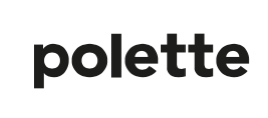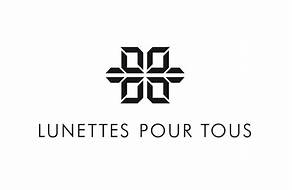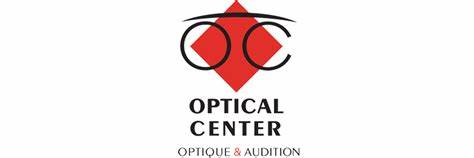Summary
The global optical market, which encompasses eyewear, sunglasses and contact lenses, was valued at around $140 billion in 2020 and is expected to reach $197.2 billion by 2027, with an impressive average annual growth rate of 8.1% between 2020 and 2027. This growth is being driven by an ageing population with an increasing need for vision correction, as well as by rising disposable incomes, which are fuelling demand for high-end eyewear products. Despite a setback in 2020 due to COVID-19, which led to an 11% drop in sales on the French market, the industry is poised for recovery. The sunglasses segment looks particularly dynamic, with growth driven by fashion trends and increased awareness of the risks associated with sun exposure.
The French optical market has shown a preference for spectacles, with 67% of wearers of prescription glasses in 2020, and spending on optical products in 2020 amounting to 6.3 billion euros. However, out-of-pocket costs remain high, leading to changes such as the "100% health" measures aimed at reducing consumer charges. The production and retailing of optical products in France is divided between low-cost products manufactured abroad and high-end products manufactured locally, with 268 establishments involved in production. Distribution is highly concentrated: independent opticians account for 47% of outlets, but only 26% of sales, while cooperative groups, branches and franchises represent a larger market share in terms of sales.
Trends in a fast-growing optical market
In the eyewear industry of the country concerned, notable trends have been observed, indicating a positive growth trajectory and favorable market dynamics. As the population ages and life expectancy increases, the need for corrective eyewear, such as glasses and contact lenses, is on the rise. The market is growing not only because of these demographic changes, but also because disposable income is rising, leading to increased demand for high-end products, including non-corrective lenses. Despite the setbacks caused by the health crisis, which led to store closures and reduced consumer spending, the market is proving resilient. Prospects for recovery are strong, as optical products are essential for a large proportion of the population.
French manufacturers, renowned for their high-end offerings, are thriving in export markets, while intense competition is seen among local retailers within the country. Globally, the optical market is expected to grow from an estimated value of around $140 billion in 2020 to around $197.2 billion by 2027. Despite this optimistic growth, differences in spectacle and contact lens wear across Europe reflect different practices and healthcare systems. For example, countries such as Belgium and Macedonia both have high rates of spectacle use, but differ considerably in the percentage of contact lens wearers, which could indicate cultural and systemic differences. On the domestic market, sales of optical products have seen a moderate but steady increase over the years, with sales estimated at around 5.9 billion euros in 2020.
However, the health crisis has led to a decline in sales. Despite this, uncorrected or poorly corrected vision remains a concern for a considerable proportion of the population, particularly women and the elderly, indicating sustained and incompressible demand. Healthcare costs linked to medical optics have been rising, representing around 3% of overall consumption of healthcare and medical goods, with spending set to reach 6.3 billion euros in 2020. Although consumption of medical optics has fallen, prices are tending to rise, indicating that the fall was due to volume, most likely as a result of pandemic-related restrictions. In terms of preferences, a significant majority, around 67%, of the French population opt for prescription eyewear, with a tendency to favor glasses over contact lenses as age increases.
Key players in the global optical market
Looking at the optical market landscape, several leading companies emerge as key players shaping the consumer experience. These entities not only hold significant market shares, they are also driving innovations and trends in the sector. Let's take a look at the profiles of these major players, their market positions and their unique contributions to the optical industry.
- Luxottica: an eyewear titan Luxottica stands out as a global leader in the eyewear industry, with an extensive brand portfolio that includes household names such as Ray-Ban, Persol and Oakley. This Italian-based multinational is renowned for its scale in manufacturing and retailing, making it a giant in the eyewear sector. Thanks to its production prowess and brand selection, Luxottica illustrates how vertical integration can translate into dominant market influence.
- Vision Source: a network of excellence in eye care In the United States, Vision Source is emerging as a formidable network of private optometrists. Made up of professionals committed to personalized eye care, Vision Source ensures that quality and patient satisfaction come first. Their holistic approach to eye health has earned them a loyal patient base and significant recognition within the optical industry.
- Krys: The spearhead of French eyewear Representing the essence of "Made in France", Krys has established itself as a key figure in the French eyewear market. Committed to quality and style, Krys offers a range of products including prescription glasses, sunglasses and contact lenses. The emphasis on local manufacturing reflects a more general trend towards products with traceable origins and credible national production.
- Optic 2000: a cooperative vision in France Optic 2000 has firmly established itself on the French market thanks to a cooperative business model that enables opticians to retain their autonomy while benefiting from collective purchasing power. As a cooperative group, it combines commercial strategies with the individual commercial interests of its members, thus offering a varied range of eyewear products to the French consumer.
- Alain Afflelou: Innovation in affordability Alain Afflelou is a household name in France for offering stylish, affordable eyewear solutions. With a history of strategic shifts towards local production and offering bargains such as the famous "Tchin-Tchin" promotion, Afflelou captures the essence of accessible and fashionable optical products.
- Atol: A collaborative optical brand Atol is another renowned cooperative group.
to understand this market
Detailed content
 Inforamtion
Inforamtion
- Number of pages : 30 pages
- Format : Digital and PDF versions
- Last update : 16/04/2024
 Summary and extracts
Summary and extracts
1 Market overview
1.1 Definition and presentation
The optics market includes items and accessories worn on the eyes. Optical equipment can be worn for a variety of reasons, but among the most common are use as an accessory, to correct visual disorders or to protect the eyes. The three largest categories in the eyewear industry are:
- Eyewear ;
- Sunglasses;
- Contact lenses.
The optical industry thus encompasses all the players and processes involved in the design, production and sale of the aforementioned items. On a global level, the market's growth prospects are very promising, with a growth rate of 8.5% between 2023 and 2030. The aging of the population and the evolution of life expectancy around the world mean that the number of people needing eyeglasses or contact lenses is set to rise. This upward trend is also reinforced by rising disposable incomes, which should continue to drive the premiumization of the eyewear industry in all segments, especially non-corrective lenses.
The market has been affected by the health crisis, with store closures and confinements. However, the optical market is a consolidated one, and despite sales declines in 2020 for many brands, there is little doubt that this vital market will recover.
While many high-end French manufacturers are performing well on the export market, many local retailers are in fierce competition with each other.
2023 was a record year for the optical sector in France (4.5% growth over 2022), and 2024 is full of challenges: rising costs, falling consumer purchasing power, the threat of the PLFSS, low wages for employees in the sector...
1.2 A fast-growing global market
Global market size
Optical market size World, ****-****, in billions of US$ CAGR (***): +*.* CAGR (***): +*.*% Source: ****
The global optical market, which includes eyewear, contact lenses, sunglasses and other eyewear products, was estimated to be worth around US$ ***.** billion in **** and is expected to reach a value of US$ ***.** billion by ****.
There are ...
1.3 A growing national market
The optics market comprises articles, accessories and services relating to eyes and vision, and is generated mainly by the sale of pairs of prescription and sunglasses (***), contact lenses, opticians and optical stores.
Optical market value France, ****-****, in millions of euros Source: ****
By ****, optical sales have been estimated at *.* billion euros, ...
1.4 Optical foreign trade
Here we consider the data provided by UN Comtrade for the following product categories:
**** **** **** And their sub-categories
These three codes include eyeglasses, contact lenses, sunglasses and frames.
Foreign trade in optics France, ****-****, in millions of US$ Source: ****
The chart above illustrates France's trade in eyewear. It shows that France ...
2 Demand analysis
2.1 Incompressible demand and rising healthcare costs
A large proportion of demand still unaddressed
Figures provided by Santé.gouv show that a significant proportion of the population suffers from uncorrected or poorly corrected vision disorders. This proportion increases with the age of the population: for example, it is estimated that almost **% of women between the ages of ** and ...
2.2 A French preference for glasses
A strong preference for glasses, and age has a major influence
The French and optical equipment France, ****, in percent Source: ****
In ****, **% of French people wear only prescription glasses, and this varies by age:
**% of those aged ** and over **% of **-** year-olds
[***]
What drives the use of prescription eyewear?
Occasions ...
2.3 Sunglasses
In ****, the global sunglasses market will reach ** billion, with ** pairs of sunglasses sold every second. This market is estimated to reach ** billion in ****. [***]
What type of sunglasses?
Do you wear corrected sunglasses for your eyesight? France, ****, in % Source: ****
In ****, nearly one in seven French people (***) wore corrected sunglasses for their eyesight, ...
2.4 Lenses, increasingly popular
French contact lens market to reach around *** million euros in **** [***]. The French contact lens market grew by +**% between **** and ****, representing very intense growth over the period. What's more, it has grown faster than the French optical market, accounting for an ever-increasing share of that market : it represented *% of the market in ...
2.5 Where to buy, online sales: a new distribution channel with advantages and disadvantages
Here are the results of a **** survey about where to buy eyewear:
Eyewear purchase location France, ****, in % Source: ****
Traditional opticians were far behind, with **% of respondents buying their glasses at home, far ahead of low-cost chains (***). In ****, **% of lens wearers said they regularly bought online, and **% of those who didn't declared ...
3 Market structure
3.1 The care pathway and the various healthcare professionals involved
Here's a diagram showing the market structure:
Only an ophthalmologist (***). During the appointment, the specialist examines the eyes through various tests, then draws up the prescription according to the person's specific needs. The first prescription is valid for one year, and once renewed, lenses can be purchased for a further * years. ...
3.2 Optical equipment production in France
The eyewear and contact lens production process
The production sites of the optical market are diverse, from the big leaders established in France to the historic houses and the new brands and start-ups that are emerging. Depending on the range, spectacles and lenses are not all manufactured in the same ...
3.3 Distribution in the optical market
Overview of the optical retailing
Here, we consider the data provided by NAF code **.**A "Optical retailing", which includes the activities of opticians.
Number of establishments under code **.**A France, ****-****, in units Source : URSSAF Workforce under code **.**A France, ****-****, in units Source: ****
In contrast to thelens and eyewear manufacturing ...
3.4 Market players
Lens manufacturers
EssilorLuxottica (***), world leader with its subsidiaries BBGR and Shamir, Hoya (***) Carl Zeiss (***) Rodenstock (***) Seiko (***) Ophtalmic (***) Novacel (***)
This handful of players would account for over **% of the market for spectacle lenses sold in France in ****.
Opticians
Source: ****
A OpinionWay survey in February **** for MPF Conseil revealed the following ranking of ...
4 Offer analysis
4.1 Market products
General overview
Broadly speaking, the three main sectors of the eyewear industry include :
Eyewear (***) Sunglasses Contact lenses
The product range is broad, and is measured according to the different needs of the eye. Glasses with different types of lenses, contact lenses, sunglasses with polarized lenses or different colors for a specific ...
4.2 Eyeglass and contact lens prices
In the optical sector, price variations are significant and depend on various parameters such as lens type, quality, production location and production chain. The distribution channel also plays a role; glasses can be sold in pharmacies, opticians, supermarkets, etc.
Looking at the data provided by INSEE for the "medical optics" category, ...
4.3 New concepts and new products
New concepts
Relying on digital and "cross channel" devices , brands are developing new store concepts.
Atol, for example, introduced a point-of-sale concept in June **** that relies on digital applications from its Atol Pro to attract new franchisees and strengthen its network.
Atol stores are equipped with an "Atol Pro" digital solution ...
5 Regulations
5.1 The importance of the regulatory environment
Prior to ****, Internet sales of healthcare products (***) were prohibited in France. The European Commission then obliged France to open up the market to online opticians, but the market remained without a legislative framework for several years following this decision. The online sale of optical products was then gradually regulated by a ...
5.2 Reimbursement amounts and coverage
The regulatory environment is of paramount importance in France, and new regulations can alter the structure of demand. The new **** regulations capping the reimbursement of glasses and limiting the renewal of glasses to once every two years are thus said to be responsible for the slower growth in the market since ...
5.3 A new stage in zero out-of-pocket expenses in 2020
From January *, ****, entry-level "no out-of-pocket expenses" offers (***) or CMU-c.
The ***% health care reform offers services and equipment in a specific basket comprising * care categories: optical, dental and audiology. The equipment and services contained in these baskets will be fully covered. The optical and dental baskets in the ***% offer will be available ...
6 Positioning the players
6.1 Optical market segmentation
- Polette
- Optique E.Leclerc
- Lunettes pour tous
- Otiko
- Mister Spex
- GrandVision
- Optic 2000
- MB production
- Optical Center
- Coffignon
- Marcolin (LVMH Groupe)
- Essilor Luxottica groupe
- Afflelou
- Krys Group
- Kering Eyewear
- Générale d'optique (GrandVision)
- Direct Optic (Acuitis Groupe)
- Easy Verres
- Easy Lunettes
- MyMonture
- L'Opticien qui bouge
- Optique Lafayette (Laf Santé Groupe)
- Optical Discount
- Lissac (Optic 2000)
- Thélios (LVMH Groupe)
- Fittingbox
 List of charts
List of charts
- Optical market size
- Proportion of the population wearing glasses and contact lenses
- Optical market value
- Medical optics consumption
- Structure of optical spending
All our studies are available online in PDF format
Take a look at an example of our research on another market!
Latest news
Companies quoted in this study
This study contains a complete overview of the companies in the market, with the latest figures and news for each company. :
 Choosing this study means :
Choosing this study means :
Access to more than 35 hours of work
Our studies are the result of over 35 hours of research and analysis. Using our studies allows you to devote more time and added value to your projects.
Benefit from 6 years' experience and over 1,500 industry reports already produced
Our expertise enables us to produce comprehensive studies in all sectors, including niche and emerging markets.
Our know-how and methodology enable us to produce reports that offer unique value for money.
Access to several thousand articles and paid-for data
Businesscoot has access to all the paid economic press as well as exclusive databases to carry out its market research (over 30,000 articles and private sources).
To enhance our research, our analysts also use web indicators (semrush, trends, etc.) to identify market trends and company strategies. (Consult our paying sources)
Guaranteed support after your purchase
A team dedicated to after-sales service, to guarantee you a high level of satisfaction. +44 238 097 0676
A digital format designed for our users
Not only do you have access to a PDF, but also to a digital version designed for our customers. This version gives you access to sources, data in Excel format and graphics. The content of the study can therefore be easily retrieved and adapted for your specific needs.
 Our offers :
Our offers :
the optical market | France
- What are the figures on the size and growth of the market?
- What is driving the growth of the market and its evolution?
- What is the positioning of companies in the value chain?
- Data from several dozen databases
Pack 5 études (-15%) France
- 5 études au prix de 75,6€HT par étude à choisir parmi nos 800 titres sur le catalogue France pendant 12 mois
- Conservez -15% sur les études supplémentaires achetées
- Choisissez le remboursement des crédits non consommés au terme des 12 mois (durée du pack)
Consultez les conditions du pack et de remboursement des crédits non consommés.





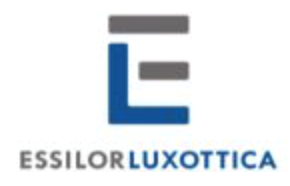 BBGR boosts Seine-et-Marne capacity by 30% to keep pace with growth in Nikon optical lenses - 30/03/2024
BBGR boosts Seine-et-Marne capacity by 30% to keep pace with growth in Nikon optical lenses - 30/03/2024
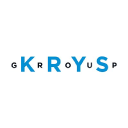 Krys Group puts the finishing touches to the modernization of its Bazainville plant - 08/03/2024
Krys Group puts the finishing touches to the modernization of its Bazainville plant - 08/03/2024
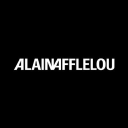 Afflelou innovates: discount, private labels and teleconsultation - 04/12/2023
Afflelou innovates: discount, private labels and teleconsultation - 04/12/2023
